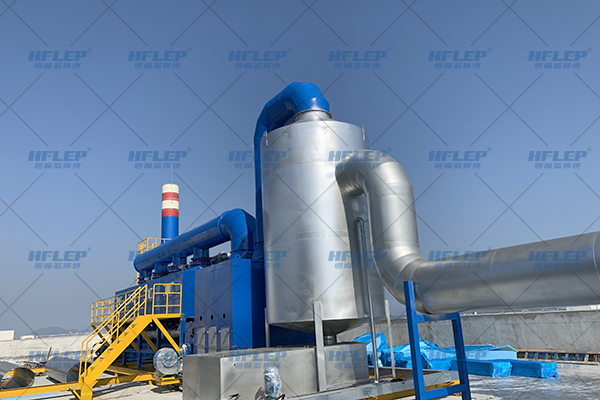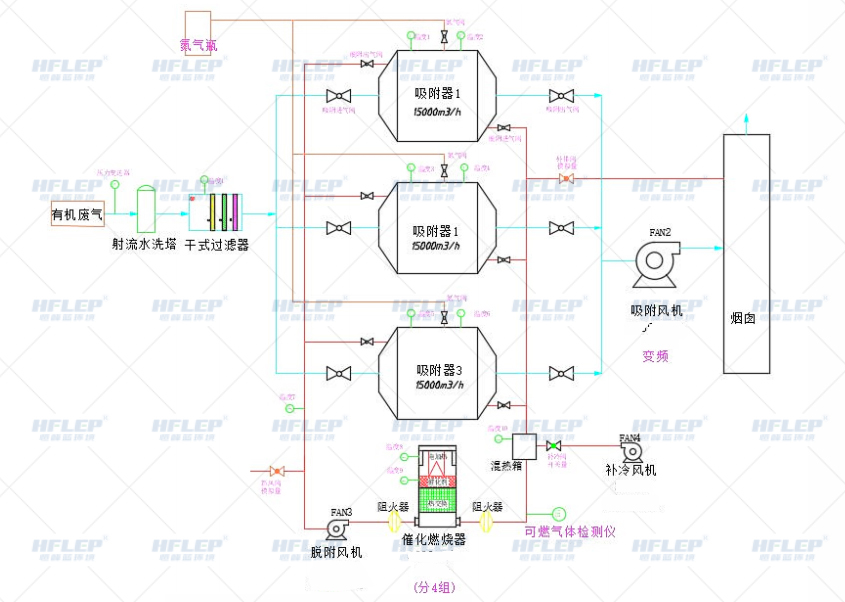Experienced Manufacturers
Production plant area of more than 10,000 square feet, more than 100 people construction team.
 Hotline
Hotline

Industry Introduction
Film is a thin, soft, transparent sheet. It is made of plastic, adhesive, rubber or other materials. Thin films are scientifically defined as 2-dimensional materials formed by the deposition of atoms, molecules or ions on the surface of a substrate. Examples: optical film, composite film, superconducting film, polyester film, nylon film, plastic film, etc. Thin films are widely used in electronics, machinery, printing and other industries. Thin-film materials are thin metallic or organic layers with thicknesses ranging from a single atom to several millimetres. Electronic semiconductor functional devices and optical coatings are the main applications of thin film technology.
Pollution Hazards
Thin film new materials in the fusion of raw materials in the production process will produce a certain amount of organic waste gas pollution, common functional special plastic film production, using raw materials such as: EVOH high barrier plastic particles (ethylene / vinyl alcohol copolymer), PE plastic particles, PA plastic particles, PP plastic particles, Tie plastic particles, EVA plastic particles in the heating and melting, cast film, multi-layer co-extruded in the process will produce Volatile organic compounds (non-methane hydrocarbons, ammonia).
Overview of the film exhaust treatment programme
For film exhaust VOCs treatment technology, nowadays, in line with the environmental emission requirements, and play a cost-effective treatment technology, is the use of wind reduction and concentration + combustion method of treatment technology is more economical and energy-saving. Suggested use: dry filters + wind enrichment + catalytic combustion combination of governance, governance can meet the emission requirements of the standard!
Film exhaust treatment process

Other treatment technology solutions
Reason for choice

Production plant area of more than 10,000 square feet, more than 100 people construction team.

A number of engineers and technicians, most of whom have more than 10 years of experience and have worked on numerous projects.

Adoption of the latest domestic and international treatment technology, with high treatment efficiency.

According to the actual needs of the project, free to customise the corresponding exhaust gas treatment solutions, all regions of the country package to meet the emission standards.

Passed the third level of construction enterprise qualification and a number of technical patents...

1000+ project experience, more than 100 industry partners, complete environmental protection qualification.
Contact - Ways
Contact information
Catalytic combustion machine is a dry filter + adsorption de...

Activated carbon adsorption and desorption + CO catalytic co...

Zeolite rotor concentration + RTO regenerative incinerator c...

Zeolite rotor concentration + CO catalytic combustion proces...

CO catalytic combustion + TO direct combustion furnace proce...

For low concentration and low air volume of waste gas treatm...


Industry Introduction
Film is a thin, soft, transparent sheet. It is made of plastic, adhesive, rubber or other materials. Thin films are scientifically defined as 2-dimensional materials formed by the deposition of atoms, molecules or ions on the surface of a substrate. Examples: optical film, composite film, superconducting film, polyester film, nylon film, plastic film, etc. Thin films are widely used in electronics, machinery, printing and other industries. Thin-film materials are thin metallic or organic layers with thicknesses ranging from a single atom to several millimetres. Electronic semiconductor functional devices and optical coatings are the main applications of thin film technology.
Pollution Hazards
Thin film new materials in the fusion of raw materials in the production process will produce a certain amount of organic waste gas pollution, common functional special plastic film production, using raw materials such as: EVOH high barrier plastic particles (ethylene / vinyl alcohol copolymer), PE plastic particles, PA plastic particles, PP plastic particles, Tie plastic particles, EVA plastic particles in the heating and melting, cast film, multi-layer co-extruded in the process will produce Volatile organic compounds (non-methane hydrocarbons, ammonia).
Overview of the film exhaust treatment programme
For film exhaust VOCs treatment technology, nowadays, in line with the environmental emission requirements, and play a cost-effective treatment technology, is the use of wind reduction and concentration + combustion method of treatment technology is more economical and energy-saving. Suggested use: dry filters + wind enrichment + catalytic combustion combination of governance, governance can meet the emission requirements of the standard!
Film exhaust treatment process

Other treatment technology solutions